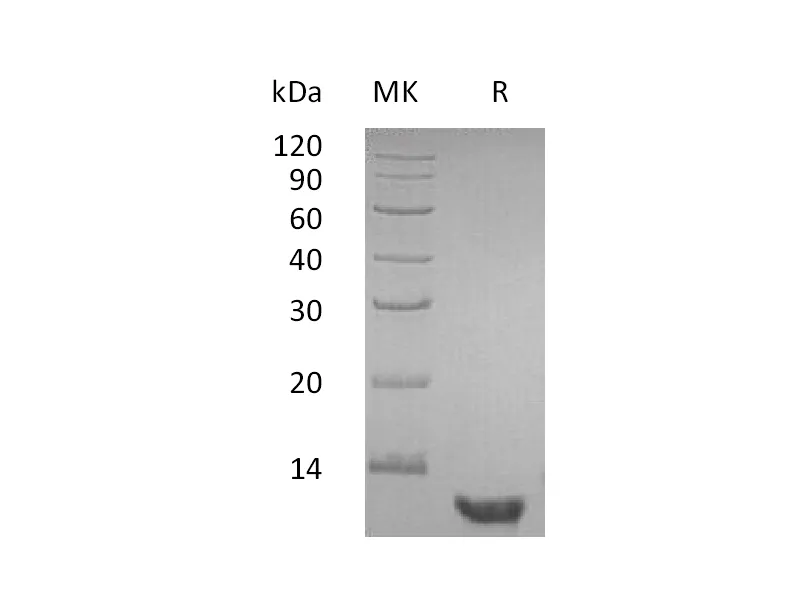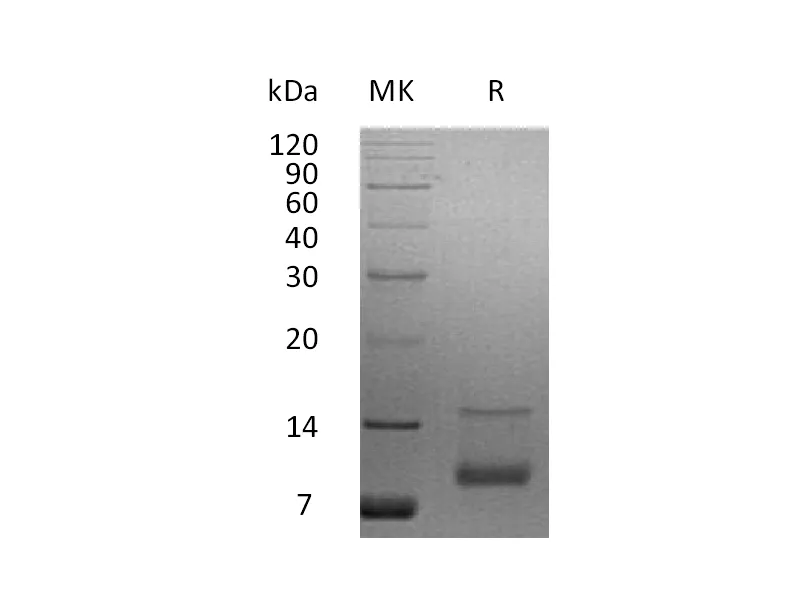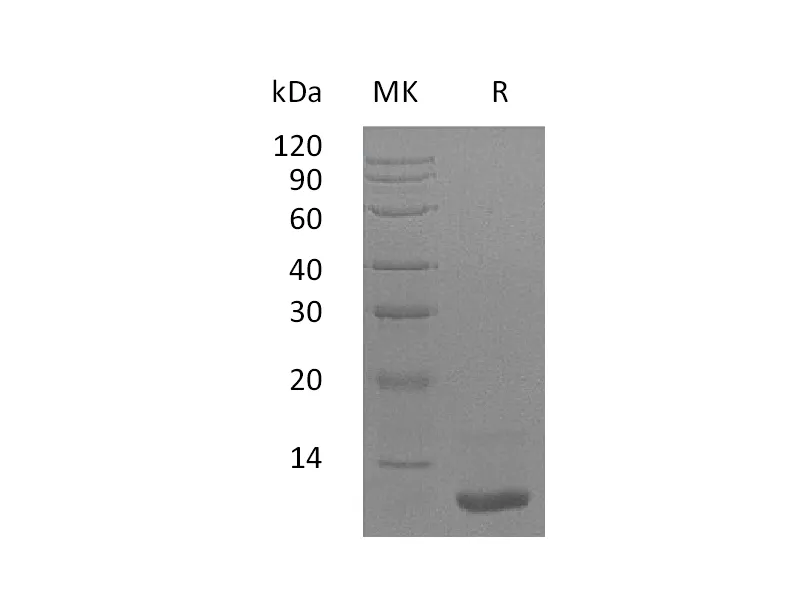| 产品名称 |
Recombinant Human NNT (N-6His) |
| 英文名称 |
NNT |
| 纯度 |
Greater than 95% as determined by reducing SDS-PAGE |
| 内毒素 |
<1 EU/µg as determined by LAL test. |
| 蛋白构建 |
Recombinant Human NAD(P) transhydrogenase is produced by our E.coli expression system and the target gene encoding Met880-Lys1086 is expressed with a 6His tag at the N-terminus. |
| Accession |
Q13423 |
| 表达宿主 |
E.coli |
| 种属 |
Human |
| 预测分子量 |
24.4 KDa |
| 制剂 |
Supplied as a 0.2 μm filtered solution of PBS, 10mM GSH, 50% Glycerol, pH7.4. |
| 运输方式 |
The product is shipped on dry ice/polar packs.Upon receipt, store it immediately at the temperature listed below. |
| 稳定性&储存 |
Store at ≤-70°C, stable for 6 months after receipt.Store at ≤-70°C, stable for 3 months under sterile conditions after opening. Please minimize freeze-thaw cycles. |
| 复溶 |
0 |
| 分子别名 |
| NAD(P) transhydrogenase; NNT |
| 背景介绍 |
| NAD(P)+transhydrogenase (NNT) is located in the inner mitochondrial membrane and catalyzes a reversible hydride transfer between NAD(H) and NADP(H) that is coupled to proton translocation between the intermembrane space and mitochondrial matrix. NNT activity has an essential role in maintaining the NADPH supply for antioxidant defense and biosynthetic pathways. Structurally, NNT is composed of three domains; domains I and III are hydrophilic and have binding sites for NAD and NADP, respectively, while domain II is hydrophobic and is a transmembrane pathway through which protons translocate. NNT forms dimers, whose monomers act in an anti-phase way; domain III (NADP(H)- binding) flips, allowing proton translocation across the inner mitochondrial membrane one moment and favoring hydride transfer between NAD(H) and NADP(H) the next. And NNT pathophysiological roles after the discovery of a spontaneous Nnt mutation in C57BL/6J mice. And Nnt silencing reduced the growth of cancer cell lines, suggesting that NNT might be a therapeutic target in some cancers. |
注意事项
本司产品仅用于科研,不用于临床诊断和治疗




